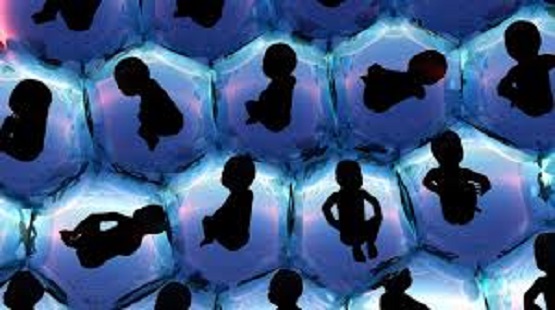A new investigation has been launched into the health of 17 teenagers born in the United States under a now-banned practice of creating three-parent embryos.
The teens were born under a controversial fertility treatment which creates embryos from two women and one man to prevent life-threatening disorders. Children born through ‘three-person IVF’ would contain some genetic material from each of three different people.
 There are about 50 known mitochondrial diseases (MCDs), which are passed on in genes coded by mitochondrial (as opposed to nuclear) DNA. They range hugely in severity, but for most there is presently no cure and little other than supportive treatment.
There are about 50 known mitochondrial diseases (MCDs), which are passed on in genes coded by mitochondrial (as opposed to nuclear) DNA. They range hugely in severity, but for most there is presently no cure and little other than supportive treatment.
But there are good reasons for pro-life people to be concerned about the process and the eugenics-based reasons behind it.
Now, according to The Independent, “a private fertility clinic in the United States has launched an investigation into the health of 17 teenagers who were born as a result of a controversial IVF technique that produced the world’s first “three-parent” embryos more than 15 years ago.”
The technique – which the US government halted in 2002 – involved mixing the eggs of two women so that the resulting IVF babies inherited genetic material from three individuals in a similar process to that planned in Britain for women carrying maternally inherited mitochondrial disorders.
About 30 IVF babies worldwide are believed to have been born by the technique, known as “cytoplasmic transfer”, including 17 infants at the Saint Barnabas Medical Centre in New Jersey who, until now, have not been checked for any long-term health problems resulting from the technique.
The findings of the follow-up will be keenly scrutinised by Britain’s fertility watchdog, the Human Fertilisation and Embryology Authority (HFEA), which is charged with making sure that a similar technique called mitochondrial donation is safe.
“We do not know of any follow-up of children born as a result of cytoplasmic transfer but we would certainly want to know the results of such a follow-up,” said an HFEA spokesman.
Any long-term health problems resulting from the technique could be embarrassing for the private IVF clinic, which began cytoplasmic transfer in 1996 as a way of boosting the chances of a successful pregnancy for couples seeking fertility treatment until it was stopped in 2002 after the US Food and Drug Administration intervened.
However, the findings would also be of intense interest to health authorities in both the United States and especially Britain where Parliament is about to decide on whether to make mitochondrial donation legal.
Dr. Peter Saunders, a pro-life physician in England, has commented on the ethical problems with three-parent embryos:
This is not about finding a cure. It is about preventing people with MCD being born. We need first to be clear that these new technologies, even if they are eventually shown to work, will do nothing for the thousands of people already suffering from mitochondrial disease or for those who will be born with it in the future.
Is it safe? This is far from established. Each technique involves experimental reproductive cloning techniques and germline genetic engineering, both highly controversial and potentially very dangerous. Cloning by nuclear transfer has so far proved ineffective in humans and unsafe in other mammals with a large number of cloned individuals spontaneously aborting and many others suffering from physical abnormalities or limited lifespans. Also, any changes, or unpredicted genetic problems (mutations) will be passed to future generations. In general, the more manipulation needed, the higher the severity and frequency of problems in resulting embryos and fetuses.
Is it ethical? No, there are huge ethical issues. A large number of human eggs will be needed for the research, involving ‘harvesting’ that is both risky and invasive for women donors. How many debt-laden students or desperate infertile women will be exploited and incentivised by being offered money or free IVF treatment in return for their eggs? How many thousands of human embryos will be destroyed? If it ever works, what issues of identity confusion will arise in children with effectively three biological parents? What does preventing those with mitochondrial disease being born say about how we value people already living with the condition? Where will this selection end? Some mitochondrial diseases are much less serious than others. Once we have judged some affected babies not worthy of being conceived, where do we draw the line, and who should draw it?







